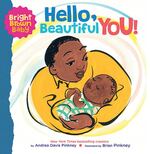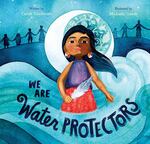Reading is a linchpin to academic success and a fundamental skill set for economic survival. It’s considered so critical to a person’s overall well-being that 35 years ago, a group of doctors, literacy experts and librarians launched what they considered a healthcare initiative seeking to get books into the homes of as many families as possible — especially those in need.
The national nonprofit Reach Out and Read began in Boston in 1989. The founders noticed the opportunity to include books in the medical setting — after all, every family is supposed to come in for a regular wellness checkup anyway. And they wanted families to understand the lifelong benefits of reading aloud to their children every day.
Reach Out and Read has grown to serve more than 4.4 million children at 6,200 medical clinic sites across the country annually, working directly with pediatric care providers to give children up to age 5 a free book at every wellness visit.
This summer, Reach Out and Read is celebrating its 35th anniversary. To honor the milestone, the national group is distributing an additional 350,000 books to partners across the country.
More than 27,500 of those books have already made their way to Oregon and Washington for this celebration. The books specifically reflect the stories and experiences of families of color, same-sex parents and characters with disabilities.
Among the kids who will benefit is 1-year-old Zayin Herkshan.

"Hello, Beautiful You!" by Andrea Davis Pinkney and illustrated by Brian Pinkney is part of Reach Out and Read's 35th-anniversary collection in 2024.
Courtesy of Reach Out and Read
Zayin’s mother, Tiffany Hunt, and father, Jeremy Herkshan, have been attending wellness checks with him at the Warm Springs Health & Wellness Clinic all year. But the family is no stranger to Reach Out and Read.
Hunt previously worked at the clinic herself. The Warm Springs’ health center serves the tribal community in Central Oregon and is a long-standing partner of Reach Out and Read. The family includes three older daughters, now teens and tweens, who’ve benefited from the program in the past.
When they show up for Zayin’s appointments, the doctor examines Zayin, lets the family pick out a new book to take home, and then observes and comments on how the new toddler responds to everything.
“[It’s awesome] to see them laughing at the pictures and then Zayin’s eyes lighting up while they’re reading to him,” Hunt said. “And then he starts kicking around, moving his arms around.”
Using books to gauge child development
Doctors like Melissa Devalon, a family physician at the Warm Springs clinic, are looking to gauge the child’s developmental markers. Is the child following the pictures, for example? Are they pointing, trying to communicate or turning the page?
She’s also watching to see how the parents engage. Her advice for families is to spend time reading every day, even with infants. Just hearing parents talk or sing helps with language development, and bonding for 15 minutes every day by doing something together like reading helps with development, too.
“I had a kid not too long ago,” Devalon told OPB. “He was probably about 3. And, you know, I brought the book in, and I could tell that he already knew what to do with it. [He] took it to his mom and, and he was just excited about it and sat there in his mom’s lap, and they went through it.
“It was just a really great thing to watch,” she said.
Advocates say these interactions over books set children up for success in school and in life. They can help close learning gaps for kids whose families may have a harder time accessing books at all, such as families in more rural areas, or those who can’t find books that reflect their identities.
“Children’s books are a wonderful, joyous thing, right?” Jessica Mortensen, the executive director of Reach Out and Read’s Northwest region, said. “They’re just such a critical part of childhood, that not every child has access to. But we can make that happen.”

"We are Water Protectors" by Carole Lindstrom and illustrated by Michaela Goade is part of Reach Out and Read's 35th-anniversary book collection in 2024.
Courtesy of Reach Out and Read
Reach Out and Read added nearly a dozen locations in Oregon in recent months, most of which serve rural areas and families historically marginalized by health and education systems, including Native and Indigenous communities.
The organization now partners with five tribal health clinics in Oregon, including the clinic in Warm Springs, and 20 in Washington, to help support these communities across the Pacific Northwest.
According to the National Indian Council on Aging, Inc., American Indians die on average 12 to 13 years earlier than white Americans, and their education metrics — from graduation rates to chronic absenteeism according to the Oregon Department of Education — suggest worse outcomes compared to other student populations.
‘Mirrors and windows:’ The importance of diverse, inclusive books
Reach Out and Read has a catalog of books that physicians can browse and select from for their patients. The group wants to continue diversifying its book lists.
Mortensen gave the example of the book “My Heart Fills with Happiness” by Indigenous Canadian author Monique Gray Smith. She said Reach Out and Read worked with vendors and then with the publisher to ensure they could distribute copies of the book not only to Oregon’s tribal health clinics but to all partner sites.
The conversation on which books to take home is unique to each family, she said, and aligned with what the communities are hoping to accomplish for themselves. By not being a “one size fits all approach,” she argues, more communities get what they need.
“Reach Out and Read, you know, on the surface, is a simple program, right? Give a book, talk about it, take it home and read it,” Mortensen said. “But the implementation of that has so many different (options).”
Mortensen said it’s important that families have access to books experts describe as “mirrors and windows.”
Mirror books reflect the reader’s own life, and window books show the reader a peek into the lives and experiences of others. Literacy experts say both are important in their own ways — one builds a sense of self-identity and pride, and one helps teach and foster empathy.
But not all these books are shared equally.
“All too often, certain groups of children are seeing fewer mirrors than windows,” Mortensen said. “What we’re trying to do is make sure our partners who are in Native American health clinic settings have access to books with enough of those mirrors.”
Advocates with the organization say their approach is practical, customizable and sustainable. It also helps children and families feel more comfortable around their doctors.
“Often, we think about medical visits being stressful — they are for us as adults; they are for children as well,” Mortensen said. “And really, to me, the power of Reach Out and Read is that when you welcome someone into a space with a gift, that is very human.
“[It] makes something that otherwise could be hard, joyful and fun and connected.”
Devalon said the program also gives families a good reason to return.
“I always tell the parents, ‘Yeah, you know, every time [you] come in for a wellness check, you’ll get another book,’” she said. “It’s another incentive to come back again.”
That’s great for parents like Hunt, who wants to build up a whole library for Zayin at home. She envisions a time when her son is older and he’ll have plenty of books to flip through himself. The family has signed up for other book programs, too, Hunt said, and they’re trying to establish a nightly reading routine with Zayin.
Hunt recognized it’s a hard habit to maintain sometimes. Life gets busy. But her advice to other parents is to keep it up.
“[To] see the light that shines in their eyes,” she said, “and the excitement that they have looking at the different colors and the different shapes and animals is very beneficial for them.”
At the end of the day, children have to learn to communicate, form bonds and read in order to navigate the world. Advocates like Mortensen say society will be much healthier — mentally and physically — if we invest in literacy as a key cornerstone of healthcare.
“The importance of literacy,” she said, “is to be able to access information and to succeed at work, school and in life.”
